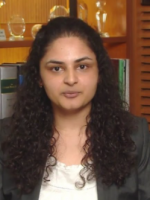The Securities and Exchange Board of India (“SEBI”) has recently introduced certain amendments to SEBI (Alternative Investment Regulations), 2012 (“AIF Regulations”) and circulars in relation thereto focused at inter alia prescribing timelines for first closing, distribution waterfall mechanism and foreign investments in Alternative Investment Funds (“AIFs”). In this regard, the provisions related to the tenure of the scheme of the AIFs, timelines for declaration of first close; and procedure for change in the control of manager or sponsor have been provided by a circular dated November 17, 2022 (“Circular I”). SEBI has also issued another circular dated November 23, 2022, which prohibits AIFs which have adopted priority distribution waterfall from receiving any fresh commitments and from making investments in new companies (“Circular II”). In addition to the above, SEBI has also recently released guidelines on acceptance of capital commitments from foreign investors in AIFs vide its circular dated December 9, 2022 (“Circular III”). In this edition of our monthly digest, we have analysed the recent amendments to the AIF Regulations including the provisions of Circular I, Circular II and Circular III.
CIRCULAR I: FIRST CLOSING, TENURE AND CHANGE IN CONTROL OF SPONSOR/MANAGER
Declaration of First Close and determination of tenure of AIFs
AIF Regulations permit AIFs to launch a new scheme by filing a separate private placement memorandum (“PPM”) with SEBI prior to launch of the scheme, along with the fees as specified in the AIF Regulations.1 In this regard, SEBI observed that in various instances, the time period between submitting the PPM and the actual launch of the scheme was unduly long, resulting in AIFs being launched with outdated PPMs, which may not have disclosures in line with the regulatory requirements, existing as of the date of the launch.
Moreover, the AIF Regulations did not provide any guidance on what constitutes a ‘launch’ of a new scheme, nor was there any uniform industry practice which defined a particular event as a ‘launch’. Generally, stakeholders considered the date from which the AIF commences seeking capital commitments from prospective investors as the launch of the scheme. However, as a matter of practical concern the date on which a fund manager starts seeking capital commitments has always been difficult to objectively ascertain or verify.
In order to resolve such issues and provide abundant clarity, SEBI has now provided certain guidelines for timeline of first closing and determination of tenure of AIFs by issuing of Circular I. We have summarised the details of the circular below
|
CONDITIONS |
TIMELINE OF FIRST CLOSING |
TENURE |
FURTHER SPECIFICATIONS |
|
AIFs registered on or after November 17, 2022 (including AIFs whose applications are pending with SEBI). |
Within 12 months from the date of SEBI communication for taking the PPM on record |
Calculated from the date of declaration of the First Closing. |
Fund Documents including the PPM to clearly specify the same. AIF may modify the tenure at any time before declaration of its First Close. |
|
Large Value Fund for Accredited Investors (“LVFs”) registered on or after November 17, 2022 (including LVFs whose applications are pending with SEBI) |
First Close to be declared no later than 12 months from date of grant of registration of AIF or date of filing of PPM, whichever is later. |
Calculated from the date of declaration of the First Closing. |
Fund Documents including the PPM to clearly specify the same. AIF may modify the tenure at any time before declaration of its First Close. |
|
AIFs whose PPMs were taken on record prior to November 17, 2021 and are yet to declare their First Closing.
|
Within 12 months from the date of the circular i.e. on or before November 17, 2023 |
Calculated from the date of declaration of the First Closing. |
Submit updated PPM (specifying the timelines as provided) with SEBI in the format specified in SEBI circular SEBI/HO/IMD/DF6/CIR/P/2020/24 dated February 05, 2020, through a SEBI registered merchant banker along with due diligence certificate from the merchant banker as specified in Annexure A of SEBI Circular SEBI/HO/IMD/IMDI/DF6/P/CIR/2021/645 dated October 21, 2021 and such updated PPM shall be circulated to investors before declaration of First Close. AIF may modify the tenure at any time before declaration of its First Close. |
|
AIFs registered and yet to declare their First Closing. |
Within 12 months from the date of the circular i.e. on or before November 17, 2023 |
Calculated from the date of declaration of the First Closing. |
Submit updated PPM (specifying the timelines as provided) with SEBI as a part of consolidated annual filing within one month from the end of FY along with due diligence certificate from the merchant banker as specified in Annexure B of SEBI Circular SEBI/HO/IMD/IMDI/DF6/P/CIR/2021/645 dated October 21, 2021. AIF may modify the tenure at any time before declaration of its First Close. |
|
LVFs registered and yet to declare their First Closing |
First Close to be declared no later than 12 months from date of circular |
Calculated from the date of declaration of the First Closing. |
Submit updated PPM (specifying the timelines as provided) with SEBI as a part of consolidated annual filing within one month from the end of FY along with due diligence certificate from the merchant banker as specified in Annexure B of SEBI Circular SEBI/HO/IMD/IMDI/DF6/P/CIR/2021/645 dated October 21, 2021. AIF may modify the tenure at any time before declaration of its First Close. |
|
AIFs which have declared their First Close and yet to declare their Final Close |
Not Applicable |
(a) May change their tenure to commence from the date of First Closing; or (b) May continue to calculate their tenure from the date of Final Closing in terms of SEBI Circular CIR/IMD/DF/7/2015 dated October 1, 2015. |
(a) Ensure that there is no change in the tenure of the Fund since AIFs are only allowed to change their tenure before the declaration of First Closing. (b) No discretion for the Manager to extend the date of final closing since any extension in the Final Closing will have the effect of increasing the tenure of the Fund by same period. |
In addition to the above, SEBI has mandated that the corpus of the AIF at the time of declaring its First Close shall not be less than the minimum corpus prescribed in AIF Regulations as applicable for the respective category/sub-category of the AIF. In order to ensure that the manager/sponsor do not commit a substantial amount solely for the purposes of achieving the minimum corpus, SEBI has also mandated that such commitment provided by sponsor/ manager at the time of the declaration of the First Close cannot be reduced, withdrawn, or transferred, post First Close.
Change in control of manager/sponsor or change in manager/sponsor of AIFs
AIFs are generally required to inform SEBI in case there is a change in the sponsor or manager, including any change in control of such entities. In this regard, prior approval from SEBI was required only for the purposes of change in control of sponsor or manager, while intimation to SEBI in respect of change in sponsor/manager was considered sufficient.
SEBI has now noted that there have been few instances where a new entity/group proceeds to set up an AIF without getting a fresh registration with SEBI, but rather by either replacing the manager and sponsor entities or acquiring a controlling stake in the manager and sponsor of an existing, but inactive AIF. Given that (i) the manager/sponsor of AIFs are required to be eligible and satisfy the ‘fit and proper’ person criteria at all times; and (ii) it is necessary to ensure that the key investment team of the new manager satisfies the qualification and experience requirement specified in AIF Regulations, SEBI has now provided for a requirement to obtain prior approval for both change in control of sponsor/manager and change in sponsor/manager. The prior approval granted by SEBI in this regard shall be valid for a period of 6 months from the date of SEBI communication for the approval.
Such request for prior approval should be accompanied by fees paid within 15 days of effecting the proposed change, in the manner as summarized below:
|
Instances |
Fee |
|
Change in control in manager /sponsor and change in manager /sponsor |
Equal to registration fee applicable to the respective category / sub-category of the AIF |
|
Change in control of manager /change of manager, and change in control of sponsor /change of sponsor of an AIF if proposed to be done simultaneously |
Equal to single registration fee |
|
Manager acquiring control in or replacing sponsor |
No fees to be paid |
|
Exit of sponsor in case AIF has multiple sponsors |
No fees to be paid |
In this regard, SEBI in order to protect the investors from being exposed to such additional expenses, has provided that the fee shall be borne by the manager and the AIF i.e. it cannot be treated as a fund expense and passed on to the investors of the AIF.
By introducing such requirements SEBI has brought the provisions regulating change in manager/sponsor of AIFs at par with those governing SEBI registered Portfolio Managers, Stock Exchanges, Depositories, Merchant Bankers, Debenture Trustees, Underwriters, Bankers to an Issue, Credit Rating Agencies, Registrar to an Issue and Share Transfer Agents. While specifying the aforementioned requirements, SEBI has also provided clarity for the applications pending with SEBI for change in control of manager/sponsor or change in manager/sponsor, by providing that the requirement of fee shall be applicable only in those applications where none of the schemes of AIFs managed/sponsored by manager/sponsor have declared their First Close.
Ring Fencing of assets of schemes
As per the extant AIF Regulations, AIFs can launch multiple investment schemes under a single registration with SEBI. Generally, each of these schemes has its own group of investors and investment portfolio. As a matter of industry practice, AIFs obtain separate PAN numbers from the Income Tax department for each of the schemes even if they are setup under a single AIF. It is noteworthy that there is no specific provision in AIF Regulations for ring-fencing and segregation of assets between schemes of an AIF unlike in the case of Mutual Funds where the trustees and asset management companies are required to ensure that the assets and liabilities of each scheme are segregated and ring-fenced from other schemes of the mutual fund; and bank accounts and securities accounts of each scheme are segregated and ring-fenced. The absence of such provisions often led to uncertainty among investors of AIF, especially among foreign investors, with respect to protection of their assets in a scheme of an AIF from any liability which may arise from other schemes of the same AIF.
In order to bring on clarity and given the existence of such clauses for Mutual Funds, SEBI has now provided that the managers of AIFs and the trustees or designated partners, as the case maybe should ensure that the assets and liabilities of each scheme are kept separate and that the bank and securities accounts for each scheme are also segregated and ring-fenced. Such amendments in the AIF Regulations are intended to bring it in line with the global standards, especially when the Variable Capital Companies Act, 2018 of Singapore provides for segregation of assets and liabilities of sub-funds within an umbrella Variable Capital Company and Companies Law of the Cayman Islands of 1998 (Part XIV) provides for the protected cell companies to ensure that there is segregation of asset and liabilities for each segregated portfolio.
CIRCULAR II: PRIORITY DISTRIBUTION WATERFALLS
In a recent development, it has come to the notice of SEBI that certain AIFs have adopted a distribution waterfall model wherein one class of investors (other than sponsor/manager) share loss more than pro rata to their holding in the AIF vis-à-vis other classes of investors/unit holders. This is done by allowing the latter class of investors priority in distribution over the former class of investors (“Priority Distribution Waterfall”). While SEBI vide its circular dated June 19, 2014, had earlier provided that the sharing of loss by the sponsor/manager shall not be less than pro rata to their holding in the AIF vis-à-vis other unit holders, there is no explicit restriction on use of Priority Distribution Waterfall model. SEBI believes that adoption of such models may be unfair and unethical since it provides for a way to circumvent the losses to others in a disproportionate manner. SEBI for the time being has prohibited AIFs using such models to accept any fresh commitments or make investments in new companies until a decision is made on the matter. SEBI is in the process of engaging in consultations with the Alternative Investment Policy Advisory Committee and other stakeholders on the issue.
CIRCULAR III: FOREIGN INVESTMENT IN AIF
SEBI, in addition to issuing Circular I and Circular II, has now issued Circular III providing certain guidelines in terms of raising funds from foreign investors. In this regard, SEBI has specified that at the time of on-boarding foreign investors, the manager of the AIF must ensure that the foreign investor is
-
a resident of a country whose securities regulator is a signatory to the International Organization of Securities Commission's Multilateral Memorandum of Understanding or has a bilateral Memorandum of Understanding with SEBI; and
-
the investor or its underlying investors must not be on the sanctions list notified by the United Nations Security Council and must not be residents of countries identified by the Financial Action Task Force as having strategic anti-money laundering or terrorism financing deficiencies, or as not having made sufficient progress in addressing such deficiencies.
In case an investor has been onboarded to the AIF and subsequently does not meet the aforementioned conditions, SEBI has mandated the manager of the AIF to not draw down any further capital contributions from the investor until they meet the conditions again.
Such provisions have the ability to impact the fund industry at large and restrict the flexibility of the fund managers while looking for overseas feeder fund jurisdictions. Moreover, the fact that the grey list is updated thrice a year, it will lead to an atmosphere of uncertainty especially when the fund managers are required to ensure compliance with such provisions throughout the life of the fund, which can easily extend beyond a decade. Such apprehensions are further substantiated by the fact that Mauritius which is one of top foreign direct investment source for India was included in the FATF grey list for a brief period before being delisted in October, 2021.
Currently, Cayman Islands and the UAE feature in FATF grey list, which accounts for 10-15% of investments into AIFs. Notably, US investors prefer to invest in India through a feeder fund set up in Delaware or the Cayman Islands. However, in the recent past, the UAE has also emerged as a choice for setting up feeder funds looking to invest in India given its investor favourable climate and proximity to India. In the wake of such provisions and given the current status of the UAE and the Cayman Islands, fund managers will now be compelled to relook at their strategies and avoid jurisdictions which stand the risk of being scrutinised by FATF. Moreover, fund managers will be now required to carry out additional KYC checks of investors to assess whether they meet the new criteria. In this regard, fund managers might have to look at shareholding and internal documents of investors to ensure that the control is with FATF-compliant investors thereby leading to additional compliance costs for funds.
NDA OPINION
SEBI, vide the issuance of Circular I, has tried to provide more certainty to the manager and investor in terms of tenure and timeline of first closing by providing for specific guidelines as applicable to AIFs in different situations. While the introduction of the requirement for prior approval from SEBI even in cases of change in sponsor/ manager provides adequate investor protection, it will add to the timelines for effectively carrying out the reorganization exercise of the sponsor/manager. Similarly, in respect of its decision as under Circular II, although a more plausible alternative in the form of adequate disclosures by AIFs or providing for express investor consent for adoption of such Priority Distribution Waterfall model could have been possible, blanket prohibition on AIFs to accept any fresh commitments or make investments in new companies until a decision is made on the matter have pushed the fund managers into a state of uncertainty regarding the next course of action. Moreover, while the provisions of Circular III now bring in parity between Foreign Portfolio Investors and AIFs, it imposes a greatly compliance burden on fund managers to implement stricter and more frequent KYC diligence.
Not surprisingly, the terms provided in Circular I, Circular II and Circular III have only further diluted the light touch regulatory nature of AIF Regulations. Recently, fund managers have witnessed regular inspections and scrutiny by SEBI in regard to regulatory compliance. It is important for the fund manager that a balance between the interests of the investor and fund manager is maintained at all times with some flexibility for the fund manager to appropriately achieve the goal of providing better returns on investments rather than being overburdened with host of compliance requirements.
FOOTNOTES
1 Regulation 12 of the AIF Regulations




 />i
/>i

